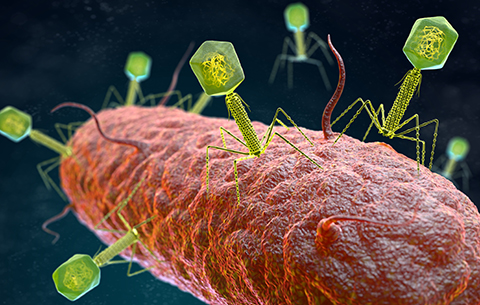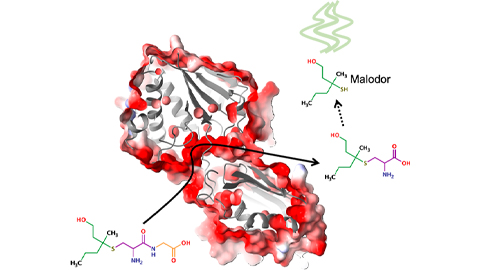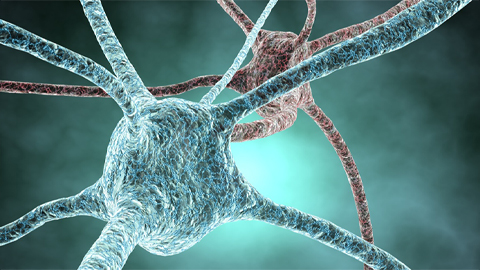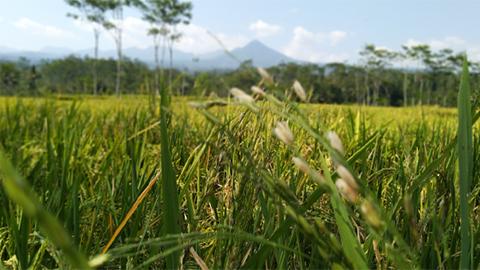The phageome: A hidden kingdom within your gut
You’ve probably heard of the microbiome — the hordes of bacteria and other tiny life forms that live in our guts. Well, it turns out those bacteria have viruses that exist in and around them — with important consequences for both them and us.
Meet the phageome.
There are billions, perhaps even trillions of these viruses, known as bacteriophages (“bacteria eaters” in Greek) or just “phages” to their friends, inside the human digestive system. Phageome science has skyrocketed recently, says Breck Duerkop, a bacteriologist at the University of Colorado Anschutz School of Medicine, and researchers are struggling to come to grips with their enormous diversity. Researchers suspect that if physicians could harness or target the right phages, they might be able to improve human health.

“There will turn out to be good phages as well as bad phages,” says Paul Bollyky, an infectious disease physician and researcher at Stanford Medicine. But for now, it’s still not clear how many phages occupy the gut — perhaps one for each bacterial cell, or even fewer. There are also bacteria that contain phage genes but aren’t actively producing viruses; the bacteria are just living their lives with phage DNA tagging along in their genomes.
And there are lots of phages still unidentified; scientists call them the “dark matter” of the phageome. A big part of current phage research is to identify these viruses and their host bacteria. The Gut Phage Database contains more than 140,000 phages, but that’s surely an underestimate. “Their variety is just extraordinary,” says Colin Hill, a microbiologist at University College Cork in Ireland.
Scientists find phages by sifting through genetic sequences culled from human fecal samples. That’s where researchers found the most common gut phage group, called crAssphage. (Get your mind out of the gutter — they were named for the “cross-assembly” technique that plucked their genes out of the genetic mishmash.) In a recent study, Hill and colleagues detailed a light-bulb shape for crAssphages, with a 20-sided body and a stalk to inject DNA into host bacteria.
It’s not clear whether crAssphages make a difference to human health, but given that they infect one of the most common groups of gut bacteria, Bacteroides, Hill wouldn’t be surprised if they did. Other common groups, which also infect Bacteroides, include the Gubaphage (gut bacteroidales phage) and the LoVEphage (lots of viral genetic elements).
Phageomes vary widely from person to person. They also change depending on age, sex, diet and lifestyle, as Hill and colleagues described in the 2023 Annual Review of Microbiology.
Though phages infect bacteria and sometimes kill them, the relationship is more complicated than that. “We used to think that phage and bacteria are fighting,” says Hill, “but now we know that they’re actually dancing; they’re partners.”
Phages can benefit bacteria by bringing in new genes. When a phage particle is assembling inside an infected bacterium, it can sometimes stuff bacterial genes into its protein shell along with its own genetic material. Later, it squirts those genes into a new host, and those accidentally transferred genes could be helpful, says Duerkop. They might provide resistance to antibiotics or the ability to digest a new substance.
Phages keep bacterial populations fit by constantly nipping at their heels, says Hill. Bacteroides bacteria can display up to a dozen types of sugary coats on their outer surfaces. Different coats have different advantages: to evade the immune system, say, or to occupy a different corner of the digestive system. But when crAssphages are around, Hill says, the Bacteroides must constantly change coats to evade the phages that recognize one coat or another. The result: At any given time, there are Bacteroides with different coat types present, enabling the population as a whole to occupy a variety of niches or handle new challenges.
Phages also keep bacterial populations from getting out of hand. The gut is an ecosystem, like the woods, and phages are bacteria predators, like wolves are deer predators. The gut needs phages like the woods needs wolves. When those predator-prey relationships are altered, disease can result. Researchers have observed phageome changes in inflammatory bowel syndrome (IBS), irritable bowel disease and colorectal cancer — the viral ecosystem of someone with IBS is often low in diversity, for example.
People try to re-balance the gut microbiome with diets or, in extreme medical cases, fecal transplants. Tackling phages might provide a more fine-tuned approach, Hill says. As a case in point, scientists are seeking phages that could be used therapeutically to infect the bacteria that cause ulcers.
Be grateful for the trillions of phages managing your gut’s ecosystem. Without them, Hill suggests, a few kinds of bacteria might quickly come to dominate — potentially leaving you unable to digest some foods and subject to gas and bloating.
The wild and wondrous phageome is a dance partner for bacteria and humans alike.
This article was republisned from Knowable Magazine. Read the original here.Enjoy reading ASBMB Today?
Become a member to receive the print edition four times a year and the digital edition monthly.
Learn moreGet the latest from ASBMB Today
Enter your email address, and we’ll send you a weekly email with recent articles, interviews and more.
Latest in Science
Science highlights or most popular articles

Cracking cancer’s code through functional connections
A machine learning–derived protein cofunction network is transforming how scientists understand and uncover relationships between proteins in cancer.

Gaze into the proteomics crystal ball
The 15th International Symposium on Proteomics in the Life Sciences symposium will be held August 17–21 in Cambridge, Massachusetts.

Bacterial enzyme catalyzes body odor compound formation
Researchers identify a skin-resident Staphylococcus hominis dipeptidase involved in creating sulfur-containing secretions. Read more about this recent Journal of Biological Chemistry paper.

Neurobiology of stress and substance use
MOSAIC scholar and proud Latino, Bryan Cruz of Scripps Research Institute studies the neurochemical origins of PTSD-related alcohol use using a multidisciplinary approach.

Pesticide disrupts neuronal potentiation
New research reveals how deltamethrin may disrupt brain development by altering the protein cargo of brain-derived extracellular vesicles. Read more about this recent Molecular & Cellular Proteomics article.

A look into the rice glycoproteome
Researchers mapped posttranslational modifications in Oryza sativa, revealing hundreds of alterations tied to key plant processes. Read more about this recent Molecular & Cellular Proteomics paper.

